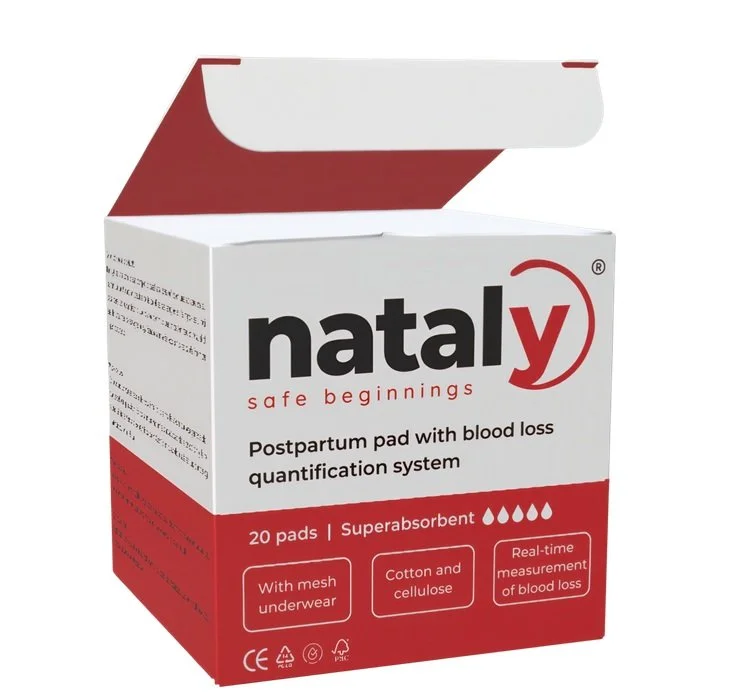A postpartum pad that absorbs and quantifies blood in real time.
No more visual estimations and late detection, ensuring a solution to monitor and manage PPH globally. An innovative Class I medical device to change maternal care worldwide.
A breakthrough in postpartum care
· The Pad
Designed to do more than just absorb blood, the Nataly Pad accurately measures it in real time. It is intended for the critical first 24 hours after childbirth, when PPH risk peaks. With Nataly, postpartum bleeding is no longer a guess — it's measurable.
In Hospitals
Midwives can ensure timely detection of a hemorrhage.
At Home
Ideal for home births or postpartum recovery after hospital discharge.
Device characteristics
Accessible
Cost-effective
Easy to use
Non-invasive
Non-electronic
Rapid deployment
Easy, quick and reliable
· How it works
Nataly is designed to act fast. Used right after childbirth, it enables midwives to easily quantify blood loss, detect postpartum hemorrhage early, and ensure timely interventions to reduce health complications and costs.
Nataly is placed after delivery
Each pad absorbs up to 300 mL of blood. It’s worn during the first 24 hours and replaced as needed.
Midwives monitor blood loss
Blood loss is visible from the outside of the pad, and if it reaches 500 mL at any point, the PPH protocol is activated immediately.
Early treatment is given
Timely pharmacological treatment reduces risks, preventing complications and lowering healthcare costs.
A small cost for a big impact
We bring measurable improvements to maternal care, saving lives, reducing costs, and simplifying clinical response
42k
lives could be saved yearly*, assuming 90% detection accuracy
$10k
in direct hospital costs saved for each avoided >1L blood loss case*
2x
reduction in pad usage compared to standard PPH workflows
85%
faster detection compared to visual estimation alone
5x
reduction in uterotonic drug use enabled by earlier detection
<30
seconds to activate PPH protocol enabling a faster response
* Data from the E-MOTIVE randomized trial (Draper et al., 2023) involving over 200,000 women.











